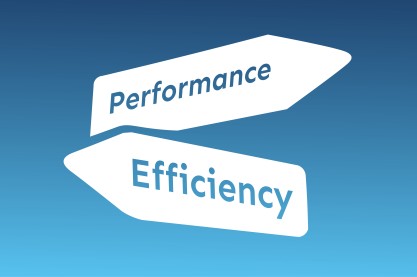Knowledge isn't just power; it's the fuel that drives individuals and organizations toward success. Embracing continuous learning and effective knowledge management isn't an option – it's a necessity for thriving in this dynamic environment. In this comprehensive article, we'll explore the profound significance of continuous learning and knowledge management, understand their core principles, recognize their importance, and discover practical applications that can shape the future.
OVERVIEW
Knowledge Management, often abbreviated as KM, is a strategic and systematic approach that organizations use to capture, organize, store, and share their intellectual assets. These assets include explicit knowledge, which is easily articulated, and tacit knowledge, the more intangible insights held by individuals within the organization.
The Three Pillars of Knowledge Management
Knowledge Management is built on three fundamental pillars:
-
Accumulating Knowledge: This involves systematically gathering information and insights from diverse sources within the organization, including employees, documents, databases, and external resources. It's the first step toward harnessing the organization's collective wisdom.
-
Storing Knowledge: Once knowledge is gathered, it must be meticulously organized and cataloged to ensure easy access, facilitating efficient decision-making and problem-solving.
-
Sharing Knowledge: Knowledge's true value is unlocked when it is shared. Effective knowledge-sharing promotes collaboration, innovation, and the spread of best practices throughout the organization, bridging silos and fostering collective learning.
What is Knowledge Base Management?
Knowledge bases are the ultimate manifestation of knowledge management efforts. These repositories house carefully collected and organized knowledge, making it easily accessible to those seeking answers or insights. Knowledge base management transforms raw data into actionable information, providing a powerful resource for decision-makers.
Exploring the Three Major Knowledge Management Systems
Within the realm of knowledge management, three major systems play pivotal roles:
-
Enterprise-Wide Knowledge Management Systems
These encompass comprehensive strategies for managing knowledge across the entire organization. They facilitate the flow of information, insights, and expertise across departments, promoting synergy and collective intelligence.
-
Knowledge Work Systems
Tailored to specific knowledge-intensive tasks and roles, knowledge work systems provide tools and platforms that empower individuals and teams to excel in their specialized domains.
-
Intelligent Techniques
Harnessing the capabilities of artificial intelligence and machine learning, intelligent techniques delve into the extraction of valuable insights and patterns from the vast sea of knowledge. They enable organizations to derive actionable intelligence from their knowledge repositories.
The Four Cs of Knowledge Management
As organizations embark on their knowledge management journey, they often rely on the "Four Cs" framework:
-
Capturing
Capturing knowledge involves the systematic collection of information and insights from various sources. Whether it's employee expertise, customer feedback, or market trends, capturing knowledge is the first step in knowledge management.
-
Creation
Creating new knowledge assets is a proactive endeavor. It involves innovation, research and development, and the generation of fresh insights that can drive organizational growth and evolution.
-
Codification
Codification is the process of structuring and organizing knowledge. It transforms raw data and unstructured information into categorized, easily navigable formats. Codification ensures that knowledge is not only stored but also readily accessible to those who need it.
-
Communication
Effective knowledge management hinges on seamless communication. It involves the facilitation of knowledge sharing and dissemination across the organization. Through open channels, teams can collaborate, learn from one another, and collectively contribute to the organization's success.
The Four Pillars of Knowledge Management
To ensure a constant flow of information, a continuous transfer of knowledge, and the effective sharing of experience, organizations must focus on four key pillars:
-
People
Enthusiastic, knowledgeable individuals who are committed to the organization's knowledge management goals are essential. They drive the knowledge-sharing culture within the organization.
-
Platforms
The technological infrastructure and tools that enable the storage, retrieval, and sharing of knowledge are critical. A well-implemented knowledge management platform facilitates the seamless flow of information.
-
Processes
Well-defined procedures and methodologies ensure that knowledge is managed systematically and consistently. Processes govern how knowledge is captured, stored, shared, and applied within the organization.
-
Culture
A commitment to learning, knowledge sharing, and innovation must be ingrained in the organization's culture. Culture shapes how individuals perceive and prioritize knowledge management.
The Five Ps of Knowledge Management
Another approach to fortifying knowledge management is the "Five Ps":
-
People
People are at the heart of knowledge management. It's the individuals within an organization who create, capture, codify, and communicate knowledge. Nurturing a culture of knowledge sharing and continuous learning among employees is paramount.
-
Process
Effective procedures and processes are the backbone of knowledge management. Organizations need well-defined methodologies for capturing, storing, sharing, and applying knowledge consistently and systematically.
-
Platform
Technology plays a pivotal role in modern knowledge management. A robust technology infrastructure ensures that knowledge is not only stored securely but also easily accessible and shareable. Knowledge management platforms facilitate the seamless flow of information.
-
Partnership
Collaboration extends beyond organizational boundaries. Establishing partnerships and alliances with external stakeholders, including clients, suppliers, and industry peers, can enrich the knowledge ecosystem and foster innovation.
-
Problem-Solving
Knowledge is not static; it's a dynamic resource that empowers organizations to address challenges and opportunities effectively. By applying knowledge to problem-solving, organizations can adapt, evolve, and thrive in an ever-changing environment.
The Six Elements of Knowledge Management
In its broadest sense, Knowledge Management encompasses six fundamental elements:
-
Generating Knowledge
Knowledge is not static; it evolves through continuous learning, research, and innovation. Organizations must actively engage in the generation of new knowledge to stay relevant and competitive.
-
Acquiring Knowledge
Knowledge often resides outside an organization's boundaries. It's crucial to tap into external sources, including industry trends, competitor insights, and customer feedback, to augment internal knowledge assets.
-
Storing Knowledge
Organizing and preserving knowledge in a structured manner is essential. Effective storage ensures that knowledge is easily retrievable, minimizing information silos and facilitating collaboration.
-
Sharing Knowledge
Knowledge is most potent when it's shared. Creating a culture of knowledge sharing encourages collaboration and enables teams to learn from one another's experiences.
-
Aggregating Knowledge
Aggregating knowledge involves consolidating information and insights from various sources within the organization. By aggregating knowledge, organizations can derive deeper insights and identify trends that inform strategic decisions.
-
Applying Knowledge
Ultimately, knowledge is a tool for informed decision-making and action. Applying knowledge in a practical context empowers organizations to achieve their goals, solve problems, and drive innovation.
The Knowledge Management Cycle (KMC)
The Knowledge Management Cycle is a set of tools and processes that enable organizations to identify, obtain, refine, share, use, store, and divest information effectively. It serves as the lifeblood of an organization's knowledge infrastructure, ensuring that knowledge flows seamlessly and contributes to the organization's development.
The 7 Knowledge Management Life Cycle Phases
The knowledge management life cycle comprises seven distinct phases:
-
Identify
Recognize and acknowledge valuable knowledge assets within the organization.
-
Store
Safeguard and catalog knowledge, making it easily accessible to those who need it.
-
Share
Facilitate the distribution of knowledge, enabling teams to collaborate and learn from one another.
-
Use
Apply knowledge for informed decision-making, problem-solving, and innovation.
-
Learn
Continuously improve based on insights gained from knowledge management efforts.
-
Improve
Enhance knowledge management processes and strategies iteratively.
-
Create
Innovate and generate new knowledge, perpetuating the cycle of knowledge management.
CONCLUSION
Knowledge management tools are the backbone of an organization's knowledge infrastructure, aligning practices with business strategy for effective knowledge creation, management, and sharing. Continuous learning empowers individuals to remain agile and adaptable, fostering a growth mindset and positioning them as lifelong learners. The synergy between continuous learning and knowledge management is undeniable, leading to innovation, informed decision-making, and sustainable success.
QUESTION:
What are your thoughts on the subject above? Feel free to post a comment or start a discussion.
TAGS: Continuous Learning, Knowledge Management, Organizational Excellence, Innovation, Lifelong Learning, Information Technology, Knowledge Sharing, Learning Culture, Knowledge Acquisition, Decision-Making, Transformative Insights, Growth Mindset, Synergy, Technology Infrastructure, Knowledge Base, Intellectual Assets, Knowledge Sharing Culture, Knowledge Management Systems, KM Architecture, Knowledge Management Cycle, Knowledge Management Life Cycle, Knowledge Components, Organizational Culture, Problem Solving, Collaboration, Information Retrieval, Strategic Knowledge, Agile Adaptation, Wisdom Stewardship, Continuous Improvement.




Leave A Comment